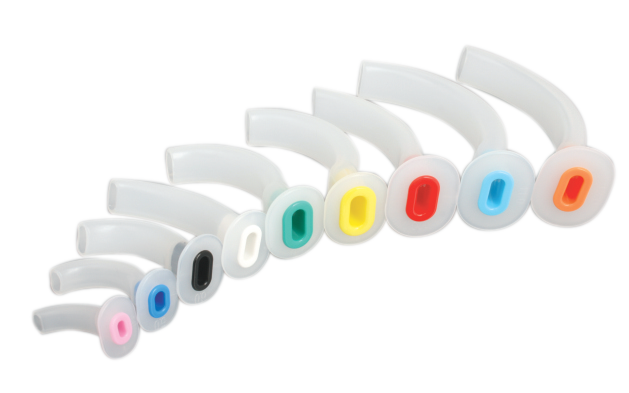
Guedel airways are devices that are inserted into the mouth in order to keep the airway open during anesthesia. They are named after Charles Guedel, who developed the first prototype in the early 20th century. Guedel airways come in various sizes and are made of different materials, including plastic, rubber, and metal.
| Ref. No.: | mm: | Size: | Color code: | Qty. Cs: |
|---|---|---|---|---|
| NMR100906 | 120 | 6 | Orange | 500 |
| NMR100905 | 110 | 5 | Light blue | 500 |
| NMR100904 | 100 | 4 | Red | 500 |
| NMR100903 | 90 | 3 | Yellow | 500 |
| NMR100902 | 80 | 2 | Green | 500 |
| NMR100901 | 70 | 1 | White | 500 |
| NMR100910 | 60 | 0 | Black | 500 |
| NMR100920 | 50 | 00 | Blue | 500 |
| NMR100930 | 40 | 000 | Blue | 500 |
Airways are simple devices that can be used to maintain an airway during anesthesia and in some emergency situations. The Guedel airway is the most common type of airway used in these situations. It is a flexible, hollow tube that is inserted into the mouth and down the throat.
Guedel airways are devices that are inserted into the mouth in order to keep the airway open during anesthesia. They are named after Charles Guedel, who developed the first prototype in the early 20th century. Guedel airways come in various sizes and are made of different materials, including plastic, rubber, and metal.
The center passage is for the passage of suction catheters to clear secretions from the back of the throat. This is an important function, as secretions can build up and block the airway. The suction catheter helps to keep the airway clear and prevent blockages.
Guedel Airways are a type of airway device that is inserted into the mouth in order to keep the airway open. They are commonly used during surgery, but can also be used in emergency situations. The device consists of a tube that goes into the mouth and a balloon that is inflated once the tube is in place. This prevents the tongue from falling back and blocking the airway.
Guedel Airways are most commonly used by people who have difficulty clearing secretions from the back of their throat. They can also be used by people who have trouble breathing through their nose.
Guedel Airways are an essential part of any ENT (ear, nose, and throat) doctor's toolkit. They are inserted into the back of the throat in order to keep the airway open during procedures. They are also used to suction secretions from the back of the throat.
To use a Guedel airway, first lubricate the airway with water-soluble lubricant. Next, insert the airway into the back of the throat. Once in place, inflate the balloon with sterile water. The balloon should be inflated until it is snug, but not too tight. Finally, connect the suction catheter to the proximal end of the airway and begin suctioning secretions from the back of the throat.
Guedel Airways provides many benefits for those who use it to clear secretions from the back of the throat. Perhaps most importantly, it is much more comfortable than using a suction catheter. Additionally, Guedel Airways is less likely to cause irritation and is easier to insert.